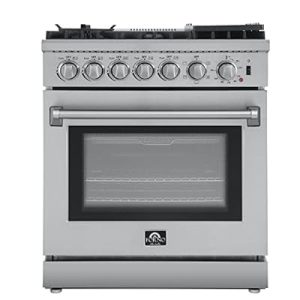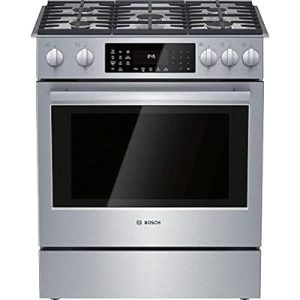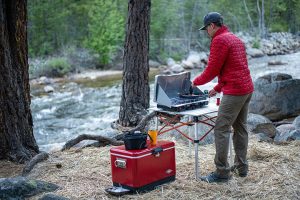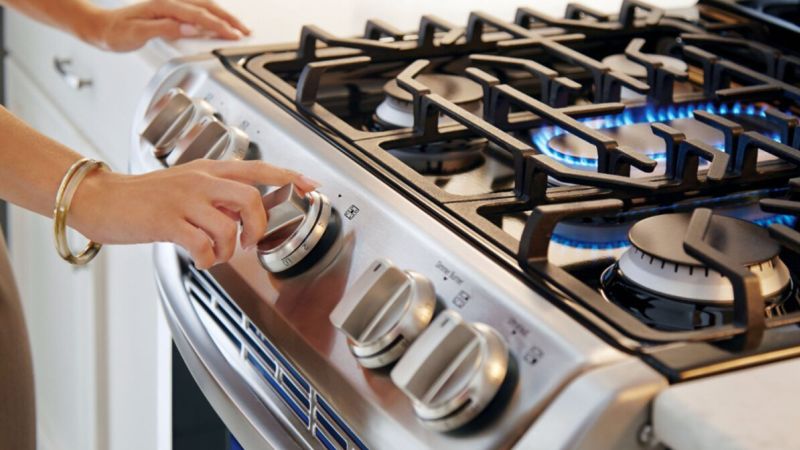StoveGuard is a leading manufacturer of high-quality, custom-fit stove protectors made in the USA. Their products are designed to safeguard your stovetop from scratches, spills, and heat damage, extending the lifespan of your range while making cleanup a breeze.
StoveGuard Premium

The StoveGuard Premium is the company’s flagship product, designed to provide maximum protection for your stovetop with its heavy-duty construction. Here are the key features that set it apart:
Unparalleled Thickness and Durability
The StoveGuard Premium boasts a thickness that is 3.5 times greater than their standard Lite model, making it one of the most robust stove protectors on the market. This extra thickness translates to superior durability, capable of withstanding even the toughest cooking conditions and messiest spills.
Custom Precision-Cut for a Perfect Fit
Each StoveGuard Premium is custom precision-cut to fit the exact dimensions of your specific stovetop model, ensuring maximum coverage and protection. This tailored fit allows the protector to hug the contours of your stovetop, leaving minimal gaps for spills to seep through.
High Heat Resistance
Constructed from durable, fire-retardant materials, the StoveGuard Premium can withstand exposure to high heat from power burners without warping, melting, or degrading.1 This heat resistance ensures the protector maintains its integrity and effectiveness, even during intense cooking sessions.
Safe Proximity to Burners
While designed to fit closely to each burner for optimal coverage, the StoveGuard Premium adheres to safety proximity standards, maintaining a safe distance from open flames to prevent any fire hazards. This balance between coverage and safety ensures peace of mind during use.
Food-Safe and Non-Toxic Materials
The StoveGuard Premium is made from FDA-approved materials that are completely free of PFOA and BPA, ensuring your safety and the safety of your food.1 You can cook with confidence, knowing that your stove protector is free from harmful chemicals.
1-Year Limited Warranty
StoveGuard backs their Premium product with a 1-year limited warranty, providing added peace of mind and a testament to the quality and durability of their flagship stove protector. With its heavy-duty construction, custom precision-cut fit, heat resistance, safe design, and food-safe materials, the StoveGuard Premium offers unparalleled protection for your stovetop, ensuring it maintains its like-new appearance and extends its lifespan, even in the busiest of kitchens.
StoveGuard Lite
 For those seeking a budget-friendly solution to protect their stovetop, the StoveGuard Lite offers a rugged yet flexible option designed to keep your gas range free from grease and grime. Here are the key highlights of this cost-effective stove protector:
For those seeking a budget-friendly solution to protect their stovetop, the StoveGuard Lite offers a rugged yet flexible option designed to keep your gas range free from grease and grime. Here are the key highlights of this cost-effective stove protector:
Custom-Fit for a Seamless Look
Like its premium counterpart, the StoveGuard Lite is custom-fit to your specific stovetop model, ensuring a seamless and tailored appearance. This precise fit not only enhances the aesthetic appeal but also maximizes coverage and protection for your stovetop.
Heat-Resistant and Durable Construction
Despite its affordability, the StoveGuard Lite is constructed from heat-resistant and durable materials, allowing it to withstand the daily wear and tear of a busy kitchen. Whether you’re searing steaks or simmering sauces, this protector can handle the heat without warping or degrading.
Safe and Non-Toxic Materials
Safety is a top priority for StoveGuard, and the Lite model is no exception. It is made from PFOA and BPA-free materials, ensuring that it is safe for use around food and won’t leach harmful chemicals into your cooking environment.
Hassle-Free Installation and Removal
The StoveGuard Lite is designed for easy installation and removal, allowing you to quickly and effortlessly protect your stovetop before cooking and remove it for cleaning or when not in use. This hassle-free design ensures convenience and flexibility in your kitchen routine.
Easy Cleaning with a Simple Rinse
One of the standout features of the StoveGuard Lite is its ease of cleaning. Unlike traditional stovetop surfaces that require scrubbing and harsh chemicals, this protector can be easily rinsed under the faucet, allowing you to quickly and effortlessly remove any grease, grime, or spills. This not only saves time but also eliminates the need for expensive and environmentally harmful cleaners.
Benefits of StoveGuard Protectors
Protect Your Stovetop and Extend Its Lifespan
One of the primary benefits of using StoveGuard protectors, both the Premium and Lite models, is their ability to safeguard your stovetop from various types of damage, ultimately extending its lifespan and saving you from costly replacements or repairs.
Scratch Protection
Stovetops, especially those made of glass, ceramic, or enamel, are susceptible to scratches from pots, pans, and utensils. StoveGuard protectors act as a barrier, preventing these scratches from reaching the stovetop surface itself. This not only preserves the aesthetic appeal but also prevents deeper scratches that can compromise the integrity of the stovetop material.
Spill and Stain Prevention
Spills and splatters are inevitable in any kitchen, but they can leave stubborn stains and discoloration on your stovetop if not cleaned promptly. StoveGuard protectors catch these spills and splatters, preventing them from reaching the stovetop surface and causing permanent stains or damage. This not only extends the lifespan of your stovetop but also saves you from the hassle of trying to remove set-in stains.
Heat Damage Protection
Prolonged exposure to high heat can cause discoloration, warping, or even cracking of certain stovetop materials. StoveGuard protectors, especially the Premium model with its fire-retardant materials, help dissipate some of the heat, reducing the direct exposure of the stovetop to extreme temperatures.
Easier Cleanup and Maintenance
In addition to protecting your stovetop, StoveGuard protectors also make cleanup and maintenance a breeze, saving you time and effort in the kitchen.
Contain Messes on a Removable Surface
Instead of having to scrub and clean the stovetop surface itself, which can be a time-consuming and challenging task, StoveGuard protectors catch spills and splatters on their removable surface. This not only contains the mess but also makes cleanup more localized and manageable.
Easy Cleaning with a Simple Rinse
One of the standout features of the StoveGuard Lite is its ease of cleaning. Unlike traditional stovetop surfaces that require scrubbing and harsh chemicals, this protector can be easily rinsed under the faucet, allowing you to quickly and effortlessly remove any grease, grime, or spills. This not only saves time but also eliminates the need for expensive and environmentally harmful cleaners.
Maintain a Like-New Appearance
By shielding your stovetop from daily wear and tear, spills, and heat damage, StoveGuard protectors help maintain a like-new appearance on your stovetop for years to come. This not only enhances the aesthetic appeal of your kitchen but also preserves the value of your range, should you ever decide to sell or upgrade. With their ability to contain messes, simplify cleaning, and preserve the pristine condition of your stovetop, StoveGuard protectors offer a convenient and hassle-free solution for maintaining a clean and well-kept kitchen.
Improved Kitchen Safety
In addition to protecting your stovetop and simplifying cleanup, StoveGuard protectors also contribute to improved kitchen safety by creating a barrier between hot surfaces and accidental contact.
Prevent Accidental Burns
Stovetops can become extremely hot during cooking, posing a risk of accidental burns, especially for children or individuals who may not be aware of the hot surface. StoveGuard protectors act as an insulating layer, preventing direct contact between the hot stovetop and hands, arms, or other body parts that may accidentally touch the surface.
Contain Hot Spills and Splatters
Hot liquids or foods that splatter or spill onto the stovetop can cause burns if they come into contact with skin. StoveGuard protectors catch these spills and splatters, preventing them from reaching the skin and causing burns, improving overall kitchen safety.
Visual Reminder of Hot Surfaces
The presence of a StoveGuard protector can serve as a visual reminder that the stovetop is hot, prompting caution and reducing the likelihood of accidental contact, especially for children or individuals who may not be aware of the hot surface. By creating a physical barrier, containing hot spills and splatters, and serving as a visual reminder of hot surfaces, StoveGuard protectors can significantly improve kitchen safety, reducing the risk of accidents and injuries, especially in households with children or individuals who may be more prone to accidental contact with hot surfaces.
Final Words
StoveGuard’s commitment to quality and customer satisfaction is evident in their 4.8/5 rating from over 37,500 customer reviews, with many praising the protectors’ effectiveness, ease of cleaning, and ability to keep their stovetops looking brand new. Whether you opt for the heavy-duty StoveGuard Premium or the budget-friendly StoveGuard Lite, these USA-made stove protectors offer a reliable solution for safeguarding your investment and simplifying kitchen maintenance.








 Camping stoves are a fundamental piece of equipment for outdoor enthusiasts, offering several distinct advantages over traditional campfires. These benefits not only enhance the camping experience but also contribute to safety and environmental conservation.
Camping stoves are a fundamental piece of equipment for outdoor enthusiasts, offering several distinct advantages over traditional campfires. These benefits not only enhance the camping experience but also contribute to safety and environmental conservation.